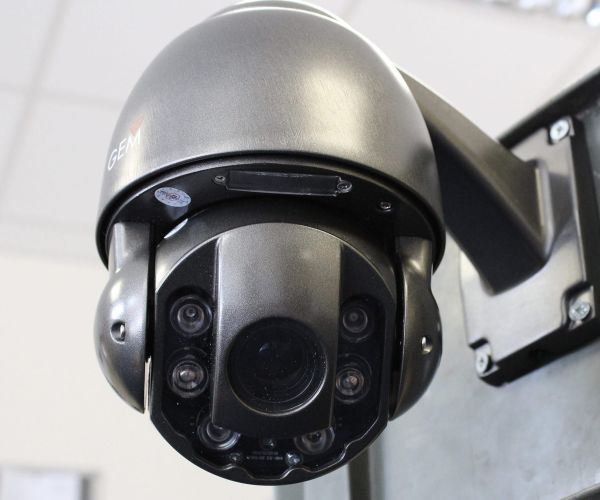Physical Penetration Testing and Red Teaming Services
Security threats constantly change, and more than standard security tests are required. Physical Penetration Testing or Red Teaming Services thoroughly check your security. Red Teaming is an advanced approach that examines every part of your physical and human defence.
We find the weak spots that others might miss. Our goal is to make your organisation ready for real threats. With our Red Teaming, you get a clear picture of where you stand and what you need to improve. Secure your business against today's complex threats with our expert testing.

Sound Familiar?
-
Are you concerned about undetected security gaps in your physical defenses?
-
Do you worry about your organisation's readiness against physical breaches of your site?
-
Is the uncertainty of compliance with industry security standards causing you stress?
-
Are you unsure about the effectiveness of your current security training and protocols for staff?
-
Do you fear the potential financial and reputational damage from a security breach or data loss?
Identifying weaknesses and vulnerabilities
We don't just look at the surface; we dig deeper. Our Red Teaming method examines your entire security setup. We check physical barriers and even staff readiness. This way, we find the hidden risks that could lead to security breaches or loss of sensitive data. By identifying these weaknesses early, you can strengthen your defences where needed.
Realistic understanding of security
Knowing your real security strength is critical. Our tests simulate actual security breach scenarios without the real-world risks. This approach shows you how your current security measures hold up under pressure. You get to see first-hand what works and what doesn't. With this knowledge, you're better equipped to handle potential threats and safeguard your organisation.
Assuring security
Your clients trust you to protect their interests. We help you keep that trust. Our Pen Testing service offers a thorough review of your security protocols. This boosts your defence and ensures you meet industry standards and regulations. You show your commitment to top-level security and client safety by choosing our services.
How the Process Works
Are you concerned about the security of your organisation? Let us take you through our simple three-step process for a physical penetration test that will help you identify vulnerabilities and improve your organisation's security posture.

Step 1: Initial Assessment and Planning
First, we sit down with you to understand your specific needs. Our team starts with an in-depth assessment, looking at your physical landscape. We use open-source intelligence and desktop reconnaissance to gather preliminary data. This step helps us tailor our Red Teaming and Pen Testing approach to effectively target your unique vulnerabilities and security concerns.

Step 2: Red Teaming and Penetration Testing Execution
Next, we move to the site. Our team conducts site reconnaissance to validate and expand our initial findings. Then, we execute the Red Teaming operation, which includes identifying and exploiting potential security vulnerabilities. This comprehensive approach ensures we thoroughly test all aspects of your security, from physical barriers to employee protocols.

Step 3: Reporting and Actionable Recommendations
Finally, we compile our findings into a detailed report. This report outlines the vulnerabilities we uncovered and provides practical recommedations for strengthening your security. We focus on giving clear, actionable steps to improve your defences against real-world threats. We aim to leave you with a more robust, resilient security posture.
Our Physical Pen Testing encompasses a range of vulnerabilities, including:
Unauthorised Access
This vulnerability occurs when an attacker gains physical access to a restricted area without proper authorisation. It could be through social engineering, tailgating, or exploiting weaknesses in physical security controls.
Weak Physical Security Controls
This vulnerability includes weak or easily bypassed physical security measures such as poorly designed locks, easily picked or duplicated keys, lack of surveillance cameras, or ineffective alarm systems.
Tailgating
This is when an unauthorised person follows an authorised person through a secured access point without being detected. This vulnerability can be mitigated by educating employees about the importance of not allowing unauthorised individuals to enter restricted areas.
Unauthorised Device Connections
This vulnerability occurs when an attacker connects unauthorised devices to the organisation's network or systems, such as plugging in a USB drive or connecting a rogue device to an open port. It can lead to data breaches or the introduction of malware into the network.
Bin or Skip Diving
This vulnerability involves attackers searching through trash or recycling bins to find sensitive information, such as passwords, system configurations, or customer data. Organisations should implement proper disposal methods, such as shredding documents containing sensitive information.
Physical Social Engineering
Social engineering involves manipulating individuals to gain unauthorised access to restricted areas or sensitive information. Attackers may pose as employees, contractors, or service personnel to deceive employees and gain access to secure areas.
Weak or Inadequate Perimeter Security
This vulnerability refers to weaknesses in the physical barriers around the organisation's premises, such as fences, gates, walls, or barriers. Attackers may exploit these weaknesses to gain unauthorised access.
Lack of Physical Monitoring
This vulnerability occurs when there is a lack of proper monitoring mechanisms, such as surveillance cameras, security guards, or intrusion detection systems. Monitoring physical access points can help identify and prevent unauthorised access attempts.
Lack of Employee Awareness
This vulnerability arises when employees are not adequately trained or aware of physical security policies and procedures. Regular training and awareness programs can help mitigate this vulnerability.
Physical Key Management
Weak critical management practices, such as leaving keys unattended, not properly logging or controlling key access, or failing to rekey locks when an employee leaves the organisation, can lead to unauthorised access.
Why Choose Us?
HZL stands out as a reliable and competent choice for companies looking to conduct physical penetration tests. With our expertise, advanced methodologies, client-focused approach, and commitment to confidentiality, HZL can help companies identify and address vulnerabilities in their physical security controls, ultimately enhancing their overall security posture.
We also serve across the world. Wherever you are we can make sure you are covered.
Czech Republic
Botswana
Zambia
Various countries across the Middle East
Holland
France
Germany
Across the UK
Consequences of Physical Security Breaches
Understanding the potential fallout from a physical security breach is crucial for any organisation.
Reputation Damage
Can your business survive if criminals exploit or sell your customer information?
Financial Impact
Physical breaches often lead to significant financial losses due to stolen trade secrets and customer data.
Confidential Information Loss
Physical intrusions commonly result in the theft of crucial information such as corporate secrets, personal data, business practices, and payment details.
Erosion of Trust
The theft of vital company equipment like laptops or servers can cause customers and vendors to lose faith in your organisation, potentially leading them to seek other partners.
Loss of Customers
The severity of a physical breach and the nature of the stolen information can trigger a loss of customers.
Legal Repercussions
In the aftermath of a physical security breach, your organisation may face lawsuits from customers whose personal data has been compromised, especially if sensitive information was involved.
Most at Risk Industries
Understanding which industries are most targeted by physical security breaches can help you assess your risk level and prioritise your security measures. Here are some of the industries that are frequently targeted by physical intrusions:
Data Centres
Data Centres are prime targets for physical intrusions due to the sensitive and valuable nature of the data they hold. Attackers often aim to access customer financial information, trade secrets, and high-value assets.
Utilties & Energy
Facilities in the utilities and energy sectors are critical infrastructure, making them attractive targets for intruders seeking to cause widespread disruption or steal sensitive operational data
Communications
Telecommunication companies hold vast amounts of customer data and proprietary technology information. Physical breaches in this industry can lead to significant data theft and operational disruptions.
Technology
The technology sector, with its cutting-edge research and development, is a frequent target for corporate espionage. Physical intrusions can result in the loss of intellectual property, trade secrets, and sensitive customer data.
Media
Media companies are targeted for their content and confidential sources. Physical breaches can lead to the theft of unreleased content, compromising both business operations and journalistic integrity.
Consumer Products
Manufacturers and retailers of consumer products face risks of physical intrusions aimed at stealing product designs, proprietary manufacturing processes, and sensitive supply chain information.
Hospitality
Hotels and other hospitality venues are often targeted due to the large volumes of personal and financial data they collect from guests. Physical breaches can compromise guest safety and privacy.
Retailers
Retailers are vulnerable to physical intrusions that aim to steal customer payment information, inventory, and proprietary sales data. These breaches can result in significant financial losses and damage to brand reputation.
Public Sector
Government agencies and public sector organisations hold critical information and are often targeted for politically motivated attacks or to access confidential public records.
Healthcare
Healthcare facilities store vast amounts of sensitive patient data. Physical intrusions can lead to the theft of personal health information, causing severe consequences for patient privacy and trust.
Our Methodology
Understanding which industries are most targeted by physical security breaches can help you assess your risk level and prioritise your security measures. Here are some of the industries that are frequently targeted by physical intrusions:
Step 1: Initial Assessment and Planning
Our process begins with a detailed consultation to understand your specific security needs and concerns. We conduct an initial assessment using open-source intelligence and desktop reconnaissance to gather preliminary data about your physical environment. This helps us tailor our testing strategy to effectively target your unique vulnerabilities and security concerns.
Step 2: Reconnaissance & Footprinting
We move on to an in-depth reconnaissance phase, where we gather intelligence on your organisation's physical layout, security controls, and employee routines. This includes identifying external and internal assets, mapping out physical control systems such as surveillance cameras, and understanding daily operational patterns.
Step 3: Scanning & Analysis
During this phase, we perform a detailed analysis of the gathered intelligence. We scan for weaknesses in your physical security controls, including barriers, access points, and surveillance systems. Our goal is to map these weaknesses to potential vulnerabilities that could be exploited by an intruder.
Step 4: Red Teaming & Penetration Testing Execution
With a solid understanding of your security landscape, we execute the Red Teaming operation. Our team conducts site reconnaissance to validate and expand our initial findings. We simulate real-world attack scenarios to test your physical security measures, attempting to bypass barriers, exploit access controls, and test employee awareness and response protocols.
Step 5: Access & Exfiltration
In this critical phase, we attempt to gain unauthorised access to restricted areas and sensitive data. This involves physical intrusion techniques, social engineering, and device tampering. We aim to demonstrate how an attacker could extract sensitive information or compromise your physical assets.
Step 6: Reporting and Actionable Recommendations
Finally, we compile a comprehensive report detailing our findings. This report includes a summary of identified vulnerabilities, the methods used to exploit them, and the potential impact on your organisation. Most importantly, we provide clear, actionable recommendations for mitigating these vulnerabilities and strengthening your overall security posture.
Our Course:
The Level 4 Award in Physical Penetration Testing Operations (RQF)
How to become a Physical Penetration Tester
Are you looking for a comprehensive training program in Physical Penetration Testing? Look no further than our Level 4 Award in Physical Penetration Testing Operations (RQF). Our OFQUAL regulated course is designed to provide individuals with the knowledge, skills, and understanding necessary to conduct authorised and effective pen testing on client sites.

Frequently Asked Questions
Physical penetration testing, led by ethical hackers, evaluates physical security measures like access controls and surveillance, attempting to gain unauthorised access to premises. Conversely, cyber penetration testing focuses on securing computer systems and data, identifying vulnerabilities such as software bugs or network misconfigurations that can be exploited remotely. Despite the differences in scope and methodologies, both types of testing are crucial for a comprehensive assessment of an organisation's security vulnerabilities and require integration to address all potential risks effectively.
Physical penetration testing at data centers focuses on evaluating the effectiveness of access controls, such as access card systems, and surveillance measures to prevent unauthorized physical access. The process includes attempts to bypass security protocols through social engineering attacks and testing physical barriers to protect sensitive data physically.